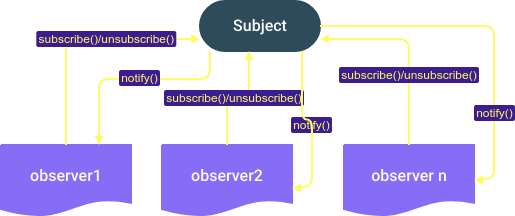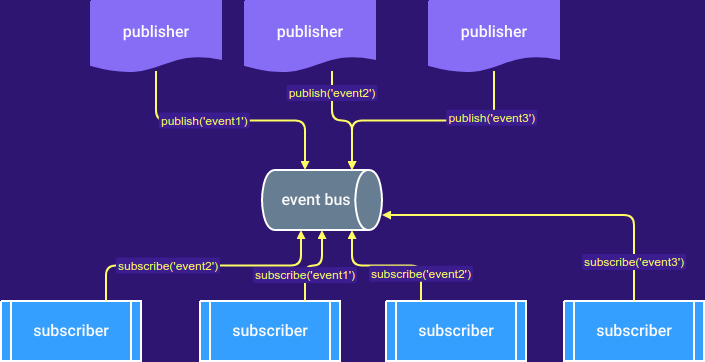State Management
in UI applications
What is State?
Local state
Global state
- is a button enabled or disabled
- is a field editable or read only
- is a container in a scrolling state
- is an API endpoint loading
- does the user have products in the cart
- is the user logged in
What is state management?
one of the hardest parts of a UI application
in simple terms: it's a combination of design patterns which helps you to synchronise state across all the applications components
Let's break it down
a typical UI application looks like this:

Is there something wrong with this?
Adding some new old concepts
- observer pattern
- pub/sub pattern
- data binding
- single source of truth
- immutability
- unidrectional flow
Observer pattern

implementations: @rxjs/Subject
Pub Sub pattern
implementations: eventemitter2

Data binding
it's a reactivity pattern where an UI component updates based on a piece of state (or data)

global state
local state
const MyComponent = () => {
const [counter, setCounter] = useState(0);
return(<div>{counter}</div>);
}Single source of truth
- the application state is stored in a big object
- the object is read only and can only be changed via separate functions which are also called actions
Immutability
const state = { users: [] };
// when changing state
state.users = [...state.users, newUser];
libraries in the wild:
immutablejs
why?
for components (observers) to know when to re-render. (oldStateRef !== newStateRef)
Unidirectional flow

Popular implementations
- redux
- mobx
state-management
By Andrei Cacio
state-management
- 1,185



